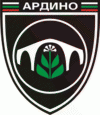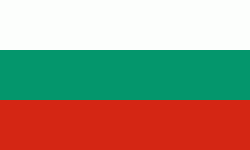Ardino (Obshtina Ardino)
 |
It is famous for its textile industry. It has a machine-building factory and a tobacco manufacturing industry. Tourist attractions include the Belite Brezi, the Eagle rocks and the Dyavolski most (Devil's bridge). Under Ottoman rule, Ardino, then known in Turkish as Eğridere, was a kaza centre in the Sanjak of Gümülcine in the Adrianople Vilayet before the Balkan Wars. Ardino received its name in 1934 and was declared as a town in 1960. Ardino is the birthplace of Sabahattin Ali, Turkish novelist, poet and journalist.
* Avramovo
* Ahryansko
* Bashevo
* Bistrogled
* Bogatino
* Borovitsa
* Brezen
* Byal izvor
Map - Ardino (Obshtina Ardino)
Map
Country - Bulgaria
 |
 |
| Flag of Bulgaria | |
One of the earliest societies in the lands of modern-day Bulgaria was the Neolithic Karanovo culture, which dates back to 6,500 BC. In the 6th to 3rd century BC the region was a battleground for ancient Thracians, Persians, Celts and Macedonians; stability came when the Roman Empire conquered the region in AD 45. After the Roman state splintered, tribal invasions in the region resumed. Around the 6th century, these territories were settled by the early Slavs. The Bulgars, led by Asparuh, attacked from the lands of Old Great Bulgaria and permanently invaded the Balkans in the late 7th century. They established the First Bulgarian Empire, victoriously recognised by treaty in 681 AD by the Eastern Roman Empire. It dominated most of the Balkans and significantly influenced Slavic cultures by developing the Cyrillic script. The First Bulgarian Empire lasted until the early 11th century, when Byzantine emperor Basil II conquered and dismantled it. A successful Bulgarian revolt in 1185 established a Second Bulgarian Empire, which reached its apex under Ivan Asen II (1218–1241). After numerous exhausting wars and feudal strife, the empire disintegrated and in 1396 fell under Ottoman rule for nearly five centuries.
Currency / Language
| ISO | Currency | Symbol | Significant figures |
|---|---|---|---|
| BGN | Bulgarian lev | лв | 2 |
| ISO | Language |
|---|---|
| BG | Bulgarian language |
| TR | Turkish language |















